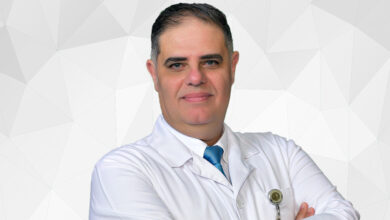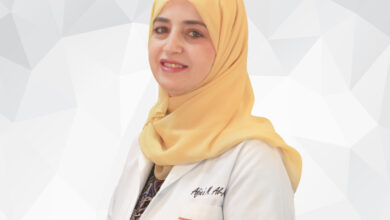
“Our devices are a vector between HCPs and patients and between the adequate treatment and the cure”
BD remains at the forefront of healthcare by focusing and developing solutions and services that enhance the overall safety and care for patients. “Hospitals” Magazine interviewed Fiona Garin, Vice President of Strategic Marketing, EMEA at BD, who confirms that BD is committed to providing the best MedTech solutions for frontline workers who can confidently carry out their duties while significantly reducing medical errors.
Has the pandemic accelerated the need for patient safety or has this been a prevailing issue already?
Patient safety has always been at the core of what we do. Addressing it is pivotal to advancing the world of health in the region because of the burden of disease and the cost associated with it. We believe that enhancing patient safety is a shared responsibility among those that are linked to healthcare directly or indirectly. By being present at multiple stages of the patient journey, we have always been intrinsically linked to the successful implementation of patient safety action plans. The pandemic has only reconfirmed we were focused on the right priorities and has deepened our focus and accelerated the pace of our journey. It has highlighted the importance of having flexible approaches that allow for the co-creation of innovative solutions to unmet needs.
We know that the initial impact of the pandemic was a devastating blow across industries and no greater than the one experienced by the healthcare industry. Frontline workers were incredibly overwhelmed by the influx of patients, as they had to manage both existing patient admissions and new cases affected by the virus.
Hospital staff have had the difficult task of achieving a balance between managing a dramatically increased workload and the need to protect themselves and patients from the risks of infections. Not to mention supply shortages as the demand for treatments increased. Patient safety was therefore more present across the patient journey more than ever before. BD aspires to build on lessons learned from the pandemic, working closely with key stakeholders to build sustainable and resilient healthcare systems by developing and implementing innovative solutions that matter, supporting healthcare practitioners to drive improved patient outcomes.
How does BD’s mission of advancing the world of health speak to its goal of patient care and safety?
The pandemic has highlighted the role and relevance of the MedTech industry more than ever before. MedTech is playing a pivotal role in improving healthcare systems in the region, and it is crucial, now more than ever, for organizations to embrace the transformations in the industry and become flexible to provide the best inpatient care.
BD remains at the forefront of healthcare by focusing and developing solutions and services that enhance the overall safety and care for patients, which has been at the center of what we do. We are also committed to providing the best MedTech solutions for frontline workers who can confidently carry out their duties while significantly reducing medical errors. It is an ongoing process for BD to improve medical discovery, diagnostics, medication management systems and the delivery of care through our capabilities, expertise, and scale to address today’s most pressing healthcare matters.
The wellbeing of healthcare workers and patients are of utmost priority when it comes to delivering care in the medical field; therefore, it is essential that we can provide and empower healthcare providers with the necessary tools to deliver better and safer treatments while optimizing their operations.
We always look forward to meeting future challenges together through customer partnerships coupled with our latest innovations that elevate the quality of healthcare and secure the patient care journey for both medical professionals and patients alike.
What are some of the key issues being faced at a global level by healthcare providers that are leading to healthcare worker and patient safety challenges?
As we have all witnessed, across all industries throughout the pandemic, the most challenging time has transformed the way we work and live. The overwhelming pressures faced by frontline workers significantly impacted their performance and raised the risks of adverse events and errors.
Because of these added layers of difficulty, human factor errors, infection prevention and control, the workflow for clinicians have also been disrupted. It makes mitigating risks of adverse effects a strenuous process.
Now that more people are working in remote environments, the delivery of care also requires careful delegation of responsibilities, which means hospitals need to prioritize the urgent needs of patients and simultaneously mitigate the risks of delayed diagnosis and treatment. These physical challenges also influence the mental state of healthcare providers, as they attempt to balance their duties through their overwhelming hours on a daily basis. The negative psychological impacts on frontline workers have a direct effect on their ability to deliver care in the safest way possible.
The frequency of visits to the doctor have decreased drastically, but there is still the need to accommodate face-to-face interactions for more critical cases and lessen the fears of mistreatments.
How do medical technology, devices and solutions help address these challenges and redefine the patient experience and journey?
Our devices are a vector between HCPs and patients and between adequate treatment and the cure. It is in our DNA to develop and help implement safe, innovative, and optimized technology to improve patient safety; technological solutions that can help address current challenges by improving diagnostic accuracy and timeliness (improving clinical decision-making), addressing staff shortages by automating tasks and allowing HCPs spend more time on patient care and intercept potential errors, reduce variation in practice, facilitate peer-to-peer learning and information sharing, and implement best practice training and education. The introduction of innovation supports the development of a culture of safety, where we can elevate the quality of care by optimizing and standardizing workflows, processes and procedures with as example full traceability, automation, and closed-loop medication management that can help prevent medication errors.
Additionally, MedTech solutions can contribute to improving infection prevention and control, reducing the incidence of healthcare-associated infections (HAIs) and the spread of antimicrobial-resistant organisms. Improving diagnostic testing enables clinicians to more accurately identify infections, properly tailor treatments case by case, and avoid unnecessary antibiotic use. Additionally, advancements in surveillance and reporting help identify patients at greatest risk of acquiring resistant infections, monitor population-based trends and provide early warning for outbreaks.
Increased partnerships between organizations and other stakeholders are essential to improving healthcare systems in the region, by implementing evidence-based practice interventions that drive better clinical outcomes and improve communication and collaboration across departments.
At BD, we would like to partner with systems, institutions and clinicians to build a culture of safety together to protect patients and increase the quality of care, where safety is flowing through every person and every system – changing attitudes and improving accountability, and where we can jointly introduce improved technologies, services and capabilities. We would like to support an overarching shift from reactive piecemeal intervention to a total systems approach addressing safety across the entire patient journey and essentially also supporting a culture of healthcare worker safety.














